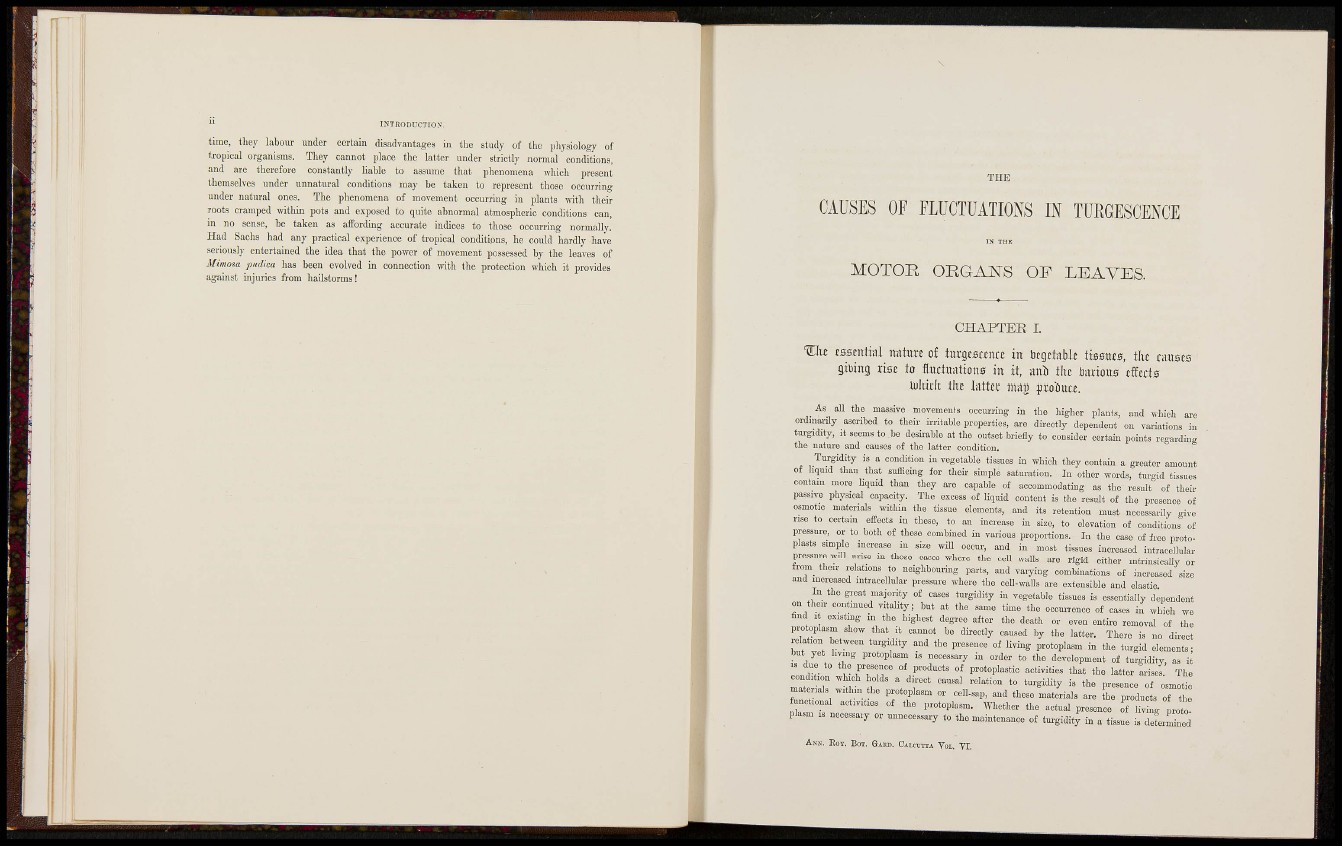
INTItODUCTION-.
time, thoy labour under certain disatlvantagcs in tlie study of tlie pliysiology of
tropical organisms. They cannot place the latter under strictly normal conditions,
and are therefore constantly liable to assume that phenomena which present
themselves under unnatural conditions may be taken to represent those occurring
under natural ones. The phenomena of movement occurring in plants with their
roots cramped within pots and exposed to quite abnormal atmospheric conditions can,
in no sense, be taken as affording accurate indices to those occurring normally.
Had Sachs had any practical experience of tropical conditions, he could hardly have
seriously entertained the idea that the power of movement possessed by the leaves of
Mimom fuika has been evolved in connection with the protection which it provides
against injuries from hailstorms!
CAUSES OF FLUCTUATIONS IN TÜEGESCENCE
IN TUE
M O T O R O R G A N S O F L E A V E S .
C H A P T E R I.
t s s t n t t t l nature of t u r g t s w n c e i n Ucgctabic J i s s w s , the t i u w cs
s i t i n g t i s i lo fluchtiUitins in it, anS the i a t i o u s c f f t t ts
tohiclt the l a t t f i - maji p a i i i t t e.
As an the massive movemenls occarring in the higher plants, and which are
ordmanly ascribed to their m-itable properties, are directly dependent on variations in
turgidily, it soems to be ilcsü'able at Iho oatset briefly to consider certain points regarding
the nature and causes of the latter condition.
Targidity is a condition in vegetable tissues in which they contain a greater amount
of hqaid than that sufBcing for then- simple salm-ation. In other words, tm-o-id tissaes
contam more liquid than they are capable of accoinmodating as the result of their
passive physical capacity. The excess of liquid content is the result of the prcscnco of
omotic materials within the tissue dements, and its retention mast necossoiily give
rise to certain effects in these, to an increase in size, to elevation of conditions of
pressmre, or to both of these combined in various piopoitions. In the ease of free protoplasts
o mcrease in size will occur, and in most tissues increased intracelWar
pressure wdl arise in those cases where the ecll walls are rigid either intrinsically or
trom then- relations to neighbouring parts, and yaiying combinations of ina-eased size
and increased intracellular pressure where the cell-walls ai-e extensible and clastic
In the groat majority of cases turgidity in vegotable tissues is essentially dependent
on then- eonünued vitality; but at the same time the occm-rence of cases i ¿ which we
find 1 existing m the highest degree after the death or even entire removal of tho
pmtoplasm show that it cannot be directly caused by the latter. There is no direct
elation between turgidity and tho prosonee of living protoplasm in the turgid elements;
but yet living protoplasm is necessary in order to the development of turgidity, as i
I d V J f f n " 'activities that tho latter arise! The
condition which holds a dircct caasal relation to targidity is the presence of osmotic
materials withm he protoplasm or cell-sap, and these materials are the products of the
functional activities of the protoplasm. Whether the actual presence of l i v Í g „roto
plasm is neeessaiy or unnecessary to the maintenance of targidity in a tissue i s T e f e i Wd
AK». KOI. BOT. Biiuj. CAICCITA Toi. TI.